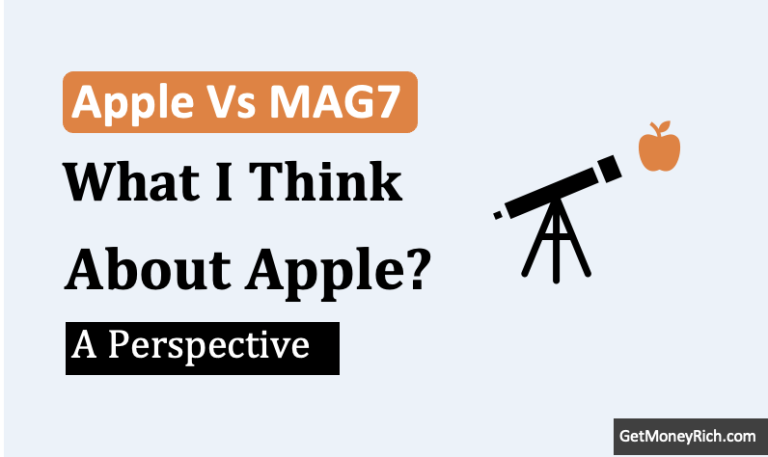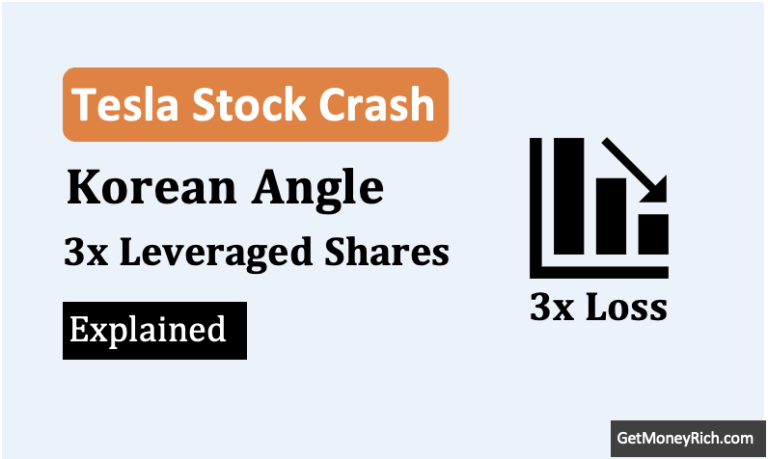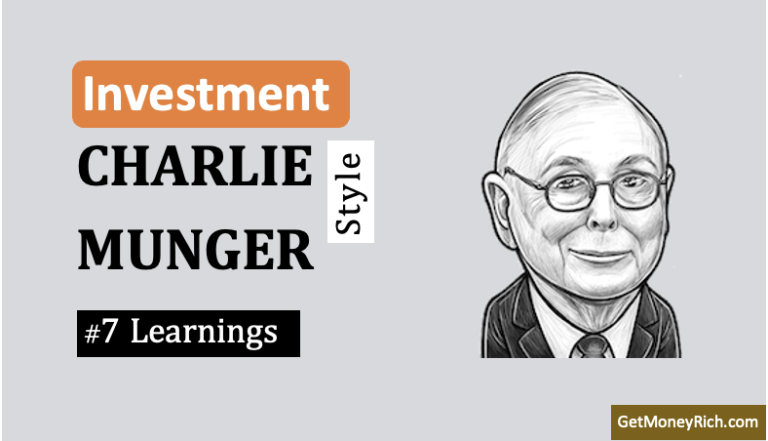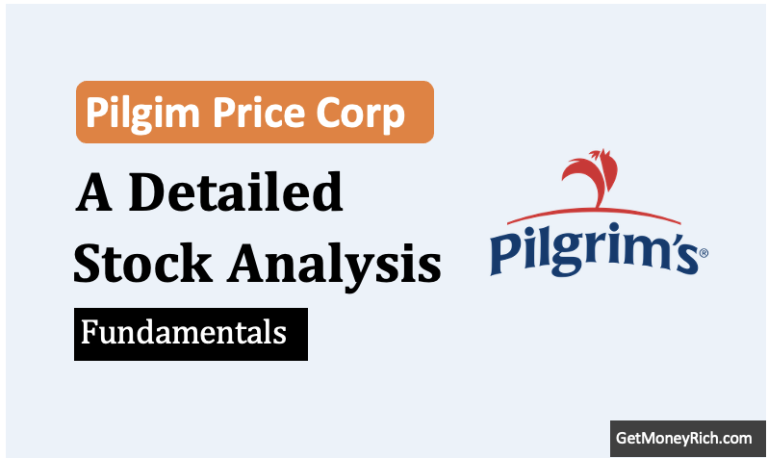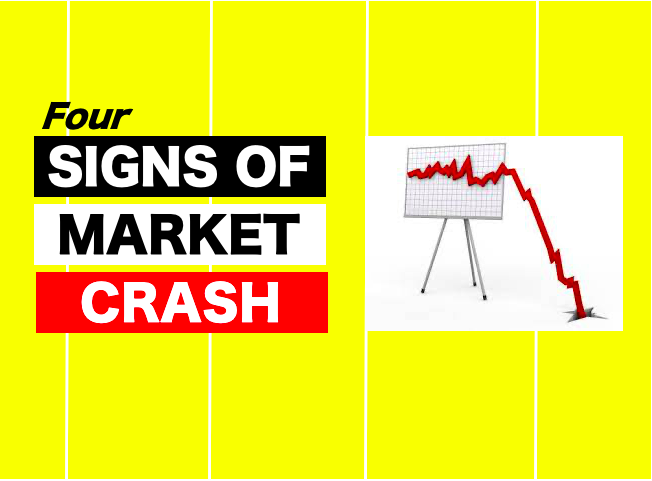Warren Buffett, the legendary investor and chairman of Berkshire Hathaway, is known for his disciplined approach to stock selection. He prefers companies with strong competitive advantages, predictable earnings, and reasonable valuations. While Buffett has historically stayed away from most tech stocks, his firm made an exception with Amazon (NASDAQ: AMZN). As of the latest filings, Berkshire Hathaway holds $2.2 billion worth of Amazon shares, representing about 0.09% of the company. This investment, though relatively small compared to his major holdings in Apple, Bank of America, and Coca-Cola, signals Buffett’s confidence in Amazon’s long-term business potential.
Given Buffett’s investment philosophy, Amazon’s cash flow generation, expanding economic moat, and reinvestment potential likely attracted him.
However, the key question is: If the market corrects and Amazon’s stock price falls, will Buffett buy more shares?
To answer this, we need to analyze his investment strategy, evaluate Amazon’s fundamentals, and estimate its intrinsic value using the Discounted Cash Flow (DCF) method.
1. Buffett’s Endorsement
First, a quick nod to the Oracle of Omaha.
As you might know, Warren Buffett isn’t exactly known for chasing tech stocks. But even he recognized something special in Amazon, eventually adding it to Berkshire Hathaway’s portfolio. He even admitted he “blew it” by not investing sooner! This alone is a pretty strong signal that there’s something compelling about the company.
But Amazon is only one piece of the pie of Berkshire Hathaway’s investments. The fact that Warren Buffett put money in this stock definitely says something about its prospects.
Here is an excerpt from Warren Buffett’s Stock Portfolio (in SL No. 16 is Amazon Inc):
| SL | Stock Name | Price ($) | Quantity (nos) | % of Company | Holding Value US$ |
|---|---|---|---|---|---|
| 1 | Apple Inc | 245.55 | 30,00,00,000 | 2.00% | 73.7 B |
| 2 | American Express Co. | 295.4 | 15,16,10,700 | 21.58% | 44.8 B |
| 3 | Bank Of America Corp. | 44.81 | 68,02,33,587 | 8.94% | 30.5 B |
| 4 | Coca-Cola Co | 71.35 | 40,00,00,000 | 9.30% | 28.5 B |
| 5 | Chevron Corp. | 156.92 | 11,86,10,534 | 6.76% | 18.6 B |
| 6 | Occidental Petroleum Corp. | 50.42 | 26,41,78,414 | 28.15% | 13.3 B |
| 7 | Moody`s Corp. | 500.28 | 2,46,69,778 | 13.68% | 12.3 B |
| 8 | Kraft Heinz Co | 31.13 | 32,56,34,818 | 27.25% | 10.1 B |
| 9 | Chubb Limited | 267.25 | 2,70,33,784 | 6.75% | 7.2 B |
| 10 | DaVita Inc | 142.4 | 3,60,95,570 | 45.12% | 5.1 B |
| 11 | Kroger Co. | 65.06 | 5,00,00,000 | 6.91% | 3.3 B |
| 12 | Verisign Inc. | 231.87 | 1,32,71,457 | 13.97% | 3.1 B |
| 13 | Sirius XM Holdings Inc | 24.75 | 11,74,68,573 | 34.68% | 2.9 B |
| 14 | Visa Inc (A) | 348.53 | 82,97,460 | 0.43% | 2.9 B |
| 15 | Mastercard Incorporated ( A) | 557.51 | 39,86,648 | 0.44% | 2.2 B |
| 16 | Amazon.com Inc. | 216.58 | 1,00,00,000 | 0.09% | 2.2 B |
| 17 | Aon plc. – Ordinary Shares – Class A | 389.56 | 41,00,000 | 1.90% | 1.6 B |
| 18 | Capital One Financial Corp. | 200.2 | 74,50,000 | 1.95% | 1.5 B |
| 19 | Activision Blizzard Inc | 94.42 | 1,46,58,121 | 1.86% | 1.4 B |
| 20 | Citigroup Inc | 79.65 | 1,46,39,502 | 0.78% | 1.2 B |
| 21 | T-Mobile US Inc | 265.17 | 43,50,000 | 0.38% | 1.2 B |
| 22 | Dominos Pizza Inc | 462.37 | 23,82,000 | 6.90% | 1.1 B |
| 23 | Ally Financial Inc | 37.49 | 2,90,00,000 | 9.50% | 1.1 B |
| 24 | Constellation Brands Inc (A) | 175.97 | 56,24,324 | 3.11% | 989.7 M |
| 25 | Liberty Media Corp.( C) | 77.58 | 1,09,17,661 | 11.90% | 847.0 M |
| 26 | Charter Communications Inc (A) | 361 | 19,91,759 | 1.40% | 719.0 M |
| 27 | Louisiana-Pacific Corp. | 98.71 | 56,64,793 | 8.07% | 559.2 M |
| 28 | Nu Holdings Ltd (A) | 10.82 | 4,01,80,168 | 0.84% | 434.7 M |
| 29 | Liberty Media Corp (A) | 75.85 | 49,86,588 | 5.44% | 378.2 M |
| 30 | Pool Corporation | 344 | 5,98,689 | 1.57% | 205.9 M |
| 31 | Heico Corp.( A) | 182.68 | 10,49,687 | 0.76% | 191.8 M |
| 32 | NVR Inc. | 7094.8 | 11,112 | 0.38% | 78.8 M |
| 33 | Jefferies Financial Group Inc | 65.62 | 4,33,558 | 0.21% | 28.5 M |
| 34 | Diageo plc – ADR | 110.52 | 2,27,750 | 0.04% | 25.2 M |
| 35 | Liberty Latin America Ltd (A) | 6.92 | 26,30,792 | 1.34% | 18.2 M |
| 36 | Lennar Corp.(B) | 116.09 | 1,52,572 | 0.06% | 17.7 M |
| 37 | Liberty Media Corp ( C) | 39.6 | 2,23,645 | 0.36% | 8.9 M |
| 38 | Liberty Latin America Ltd ( C) | 6.89 | 12,84,020 | 0.65% | 8.8 M |
[Disclaimer: This information is based on publicly available data and may not reflect the most recent changes in Berkshire Hathaway’s portfolio.]
As we see in the excerpt of Warren Buffett’s portfolio, his holding in Apple is significantly larger than Amazon. It is not the size of the holding that is important, it is the prospects of the company that is an important factor to consider.
As per the above portfolio data of Warren Buffett, Berkshire Hathaway has about $2.2 Billion worth of holding in Amazon. Hence, I thought, why not do a quick fundamental analysis of Amazon in my style.
2. Fundamental Analysis of Amazon Inc
Amazon, the name synonymous with e-commerce and cloud computing. The company’s released financials that have caught the attention of investors and analysts alike. So, what do the numbers tell us about the behemoth’s current health and future prospects?
2.1 Income Statement
Let’s take a look at a simplified analysis of their income statement data to get a sense of the story unfolding.
Revenue growth is still a major strength. Over the past few years, Amazon has consistently expanded its top line. From $469.8 billion in 2021, revenue jumped to $637.9 billion in the TTM. It is a growth rate of 6% per annum.
It’s clear that Amazon has a strong ability to generate sales. While there was a dip in the growth rate in 2023, the TTM figures indicate renewed momentum.
| Line Item | 12/31/2021 (in Billions USD) | 12/31/2022 (in Billions USD) | 12/31/2023 (in Billions USD) | TTM (in Billions USD) |
| Total Revenue | $469.8 | $513.9 | $574.8 | $637.9 |
| Gross Profit | $66.3 | $67.6 | $93.8 | $124.6 |
| Operating Income | $24.8 | $12.2 | $36.8 | $68.5 |
| Net Income | $33.3 | Net Loss | $30.4 | $59.2 |
| Basic EPS | $3.30 | -$0.27 | $2.95 | $5.66 |
However, zooming in reveals a more clearer picture. Gross Profit has been showing strong growth (13.45% per annum). It aligns with the increased Revenue.
The challenge that Amazon faced during the recent years has been in profitability. In 2022, operating income dropped significantly to $12.2B (from $24.8B), and then sharply again to only $36.8B in 2023. In these five years, it operating income growth is 22.5% CAGR.
Similarly in 2022, the net income of the company went negative. But in the five year time horizon, the company has witnesses a net income growth of 12.17% CAGR.
The main question here is: is the net loss in 2022, will be repeated in coming years or they have find a good balance?
To judge that, let’s look at the expense numbers.
Expense Analysis
| Expense | 12/31/2021 (in Billions USD) | 12/31/2022 (in Billions USD) | 12/31/2023 (in Billions USD) | TTM (in Billions USD) |
| Operating Expense | $41.4 | $55.3 | $56.9 | $56.0 |
| Selling General and Administrative | $41.3 | $54.1 | $56.1 | $55.2 |
| Selling & Marketing Expense | $32.5 | $42.2 | $44.3 | $43.9 |
To understand how this expense numbers stack-up, we have to do the margin analysis.
Margin Analysis:
Now, let’s correct that oversight and look at the key margins:
| Margin | Calculation | 12/31/2021 | 12/31/2022 | 12/31/2023 | TTM |
| Gross Profit Margin | (Gross Profit / Revenue) | 14.1% | 13.1% | 16.3% | 19.5% |
| Operating Margin | (Operating Income / Revenue) | 5.3% | 2.4% | 0.6% | 10.7% |
| Net Profit Margin | (Net Income / Revenue) | 0.7% | -0.05% | 5.3% | 9.3% |
Interpretation:
- Gross Profit Margin: This is the most basic level of profitability, measuring how well a company manages its cost of goods sold (COGS). The GPM has increased significantly from 14.1% to 19.5% showing that Amazon’s production has become more efficient.
- Operating Margin: This metric provides insights into the efficiency of Amazon’s core business operations before considering items like interest and taxes. There was a huge decline to as low as 0.6% in 2023, which has been fully recovered to 10.7% showing efficiency in operations in the TTM.
- Net Profit Margin: The bottom line – the percentage of revenue that translates into profit after all expenses and taxes. This is a good way to see the actual profits for the organization. This has jumped from -0.05% in 2022 to 9.3% in TTM.
Looking at these numbers, it is clear that the company has expanded its gross, operating, and profit margins handsomely. This is a clear indication of its pricing power.
2.2 Balance Sheet
Here is the balance sheet data. with key figures (in Billions of USD over the past four years:
| Balance Sheet Item | 12/31/2021 | 12/31/2022 | 12/31/2023 | 12/31/2024 |
| Total Assets | $420.5 | $462.7 | $527.9 | $624.8 |
| Current Assets | $161.5 | $146.7 | $172.3 | $190.8 |
| Cash & Equivalents (with ST Investments) | $96.0 | $70.0 | $86.7 | $101.2 |
| Total Liabilities | $282.3 | $316.6 | $338.9 | $338.9 |
| Current Liabilities | $14.2 | $15.5 | $16.4 | $17.9 |
| Long Term Debt + Lease Oblig. | $116.3 | $140.1 | $135.6 | $130.9 |
| Stockholders’ Equity | $138.2 | $146.0 | $201.8 | $285.9 |
| Working Capital | $19.3 | -$0.86 | $7.4 | $11.4 |
A Story of Growth and Shifting Financial Health
Amazon’s balance sheet reveals a company on a clear growth trajectory.
Over the past four years, total assets have expanded significantly (at 10.4% per annum). It demonstrates the company’s continued investment in its operations and infrastructure. This expansion is a positive sign, indicating Amazon’s ongoing efforts to capture market share and broaden its business.
One of the first things that catches the eye is the fluctuating levels of cash and short-term investments. While Amazon maintains a substantial cash reserve, the decrease in 2022 is worth noting, but it recovered significantly in 2023 and 2024. It shows active cash management.
Looking at the other side of the balance sheet, total liabilities have also been increasing. It isn’t necessarily alarming for a growth-oriented company like Amazon. However, it’s important to examine the composition of these liabilities. The good sign is, the total liabilities remained stable in 2024 despite the asset growth.
Long-term debt and capital lease obligations represent a significant portion of Amazon’s liabilities. The increase in these obligations from 2021 to 2022 suggests that Amazon has been relying on debt financing to fund its expansion. The levels have plateaued since then, indicating a good sign.
Stockholders’ equity, the residual value of assets after deducting liabilities, provides a gauge of the company’s overall financial strength. The growth in stockholders’ equity (at 19.9% CAGR in last 4 years) is generally a positive sign. The good thing is, it has grown significantly in 2023 and 2024.
The company’s working capital position is also worth examining. A positive working capital balance (current assets minus current liabilities) indicates that a company has sufficient liquid assets to meet its short-term obligations. The negative working capital in 2022 is something to note here. But working capital has recovered nicely in 2023 and 2024.
Amazon’s balance sheet paints a picture of a company that is actively growing and investing in its future. While the increasing levels of debt and liabilities warrant attention, the company’s strong asset base and growing stockholders’ equity provide a solid foundation.
The management of short-term obligations as reflected by the working capital will be the key thing to watch out for.
Overall, based on this snapshot of the balance sheet, Amazon appears to be in relatively healthy financial condition.
2.3 Cash Flow Report
Here’s a summarized table of Amazon’s cash flow data.
| Cash Flow Item | 12/31/2021 | 12/31/2022 | 12/31/2023 | TTM |
| Operating Cash Flow (OCF) | $46.3 | $46.7 | $84.9 | $115.8 |
| Capital Expenditure (CAPEX) | -$6.1 | -$6.3 | -$5.2 | -$8.2 |
| Free Cash Flow (FCF) | -$1.47 | -$1.68 | $32.2 | $32.8 |
The cash flow statement reveals some important trends:
- Operating Cash Flow Volatility: OCF has fluctuated over the years, but has shown significant growth during the last two periods. This could point to underlying strength in the business, and better earnings efficiency.
- Consistent Capital Expenditures: Amazon consistently invests a significant amount in capital expenditures, reflecting its ongoing investments in infrastructure, technology, and expansion.
- FCF Recovery: Most notably, after negative FCF in 2021 and 2022, there has been a significant recovery in Free Cash Flow in 2023, with the TTM figures showing sustained momentum. This is a crucial development, suggesting improved profitability and cash generation.
Discounted Cash Flow (DCF) Analysis
This DCF calculation is inherently based on several assumptions, so the calculated value should be taken as an approximate estimation.
- Base Year FCF: We’ll use the TTM Free Cash Flow of $32.8 Billion as our base.
- Growth Rate (Next 5 Years): Here, we will assume a growth rate of 10% for the next 5 years.
This takes into consideration the analyst estimates of an earnings growth rate of 10% per year. - Terminal Growth Rate: A terminal growth rate of 3% (very conservative). This represents the perpetual growth rate after the initial 5-year period, reflecting long-term economic growth.
- Discount Rate (WACC): I’ll use an estimated Weighted Average Cost of Capital (WACC) of 9%. This reflects the overall riskiness of Amazon’s business and its capital structure.
- Shares Outstanding: 10.6 Billion.
Calculations:
- Projected FCF for next 5 Years.
| Year | FCF (Billions USD) |
| 1 | $36.1 |
| 2 | $39.7 |
| 3 | $43.7 |
| 4 | $48.1 |
| 5 | $52.9 |
- Terminal Value: FCF (Year 5) * (1 + Terminal Growth Rate) / (Discount Rate – Terminal Growth Rate) = $52.9 * (1.03) / (0.09 – 0.03) = $907.6 Billion
- Present Value of Projected FCF: Discount each year’s projected FCF back to the present using the discount rate.
- Present Value of Terminal Value: Discount the terminal value back to the present.
- Enterprise Value: Sum of the present values of all projected FCF and the present value of the terminal value.
Using these assumptions, the Enterprise Value is approximately $942.7 Billion.
Equity Value: Enterprise Value – Net Debt = $942.7 B – $130.9 B (Total Debt from Balance Sheet) = $811.8 Billion
Intrinsic Value per Share: Equity Value / Shares Outstanding = $811.8 Billion / 10.6 Billion Shares = $76.58 per share
Comparison with Current Price
- Current Share Price: $216.58 (Given)
- Calculated Intrinsic Value: $76.58
Based on this DCF analysis, and the assumptions listed above, the estimated intrinsic value of Amazon’s stock is $76.58, which is significantly lower than the current market price of $216.58.
Therefore, based on these assumptions, Amazon appears to be significantly overvalued by the market.
While Amazon’s cash flow statement shows a strong recovery in FCF, the DCF analysis, based on these assumptions, suggests that the current market price may be overvaluing the company’s future growth potential.
PE and PEG Analysis
Here’s the table presenting the P/E and PEG data you previously provided:
| Metric | 12/31/2023 | 3/31/2024 | 6/30/2024 | 9/30/2024 | 12/31/2024 | Current |
| Trailing P/E | 79.55 | 62.2 | 54.13 | 44.47 | 46.88 | 39.16 |
| Forward P/E | 39.53 | 42.55 | 41.49 | 31.55 | 35.09 | 33 |
| PEG Ratio | 2.47 | 2.44 | 2.06 | 1.77 | 1.8 | 1.83 |
Commentary on P/E and PEG Ratios
The historical and current P/E and PEG ratios offer additional perspective on Amazon’s valuation.
- The trailing P/E ratio, which reflects the relationship between the current share price and the company’s past earnings, has steadily decreased over the past year. This suggests that the market’s perception of Amazon’s value relative to its historical earnings has become less exuberant.
- The forward P/E, which uses estimated future earnings, shows a similar trend, further indicating expectations of improved earnings growth relative to the stock price.
- Both P/E are decreasing over time, while the current P/E is relatively low when compared with its historical data.
- The PEG ratio, which incorporates earnings growth into the P/E ratio, provides a more refined valuation metric. The decreasing PEG ratio also points towards better alignment between price and growth.
Integration with DCF Analysis
The significantly lower intrinsic value from the DCF analysis aligns with the relatively high, yet declining, historical P/E and PEG ratios. The DCF analysis, with its inherently conservative assumptions, suggests that the company is potentially overvalued, and requires a relatively large haircut for intrinsic valuation. The high P/E ratio aligns with the overvaluation. The current P/E is very high relative to the calculated intrinsic value of the company.
The combination of the DCF analysis and the historical P/E and PEG ratios presents a mixed picture. While the trend toward lower P/E and PEG ratios is a positive sign, suggesting improved earnings growth, the overall valuation is still relatively rich. All this aligns with that Amazon is overvalued. Investors should exercise caution and carefully consider Amazon’s growth prospects, competitive landscape, and inherent risks before making investment decisions.
Conclusion
Our deep dive into Amazon’s financials has revealed a company at a fascinating juncture.
Revenue growth remains a powerful engine, and the recent surge in operating and net income, coupled with robust cash flow generation, suggests a successful turnaround from recent profitability challenges.
The balance sheet, while carrying a significant debt load, reflects a growing asset base and increasing shareholder equity, indicative of continued investment and expansion. However, the valuation picture is more complex.
Our Discounted Cash Flow (DCF) analysis, even with moderately optimistic growth assumptions, yielded an intrinsic value considerably below the current market price, suggesting a significant overvaluation. This conclusion is supported by the relatively high, although trending downwards, historical P/E and PEG ratios, reinforcing the notion that investors may be pricing in substantial future growth that may or may not materialize.
Now, to the million-dollar question: Will Warren Buffett buy more Amazon stock if the market falls? The answer is, as always with Buffett, nuanced and dependent on specific conditions.
Buffett’s investment philosophy emphasizes value investing, seeking out companies with strong fundamentals trading at a discount to their intrinsic value. Our analysis suggests that Amazon, at its current price, doesn’t meet that criterion. The current valuation appears to bake in a great deal of future growth, which introduces a higher level of uncertainty, something Buffett traditionally shies away from.
- However, a significant market correction could change the equation. If Amazon’s stock price were to fall substantially, bringing the valuation more in line with our calculated intrinsic value (or even below it), it could pique Buffett’s interest. He has shown a willingness to evolve his thinking (as evidenced by Berkshire Hathaway’s initial investment in Amazon), particularly when a company possesses durable competitive advantages and a strong management team. Amazon undeniably possesses both.
Therefore, the answer is conditional. If the market provides a more attractive entry point, bringing Amazon’s valuation down to a level that reflects a more reasonable relationship between price and intrinsic value, we believe Buffett might consider increasing Berkshire Hathaway’s stake. He would likely look for confirmation of continued FCF generation, sustained operating margin improvements, and clear evidence that Amazon’s competitive moat remains strong.
Have a happy investing.

